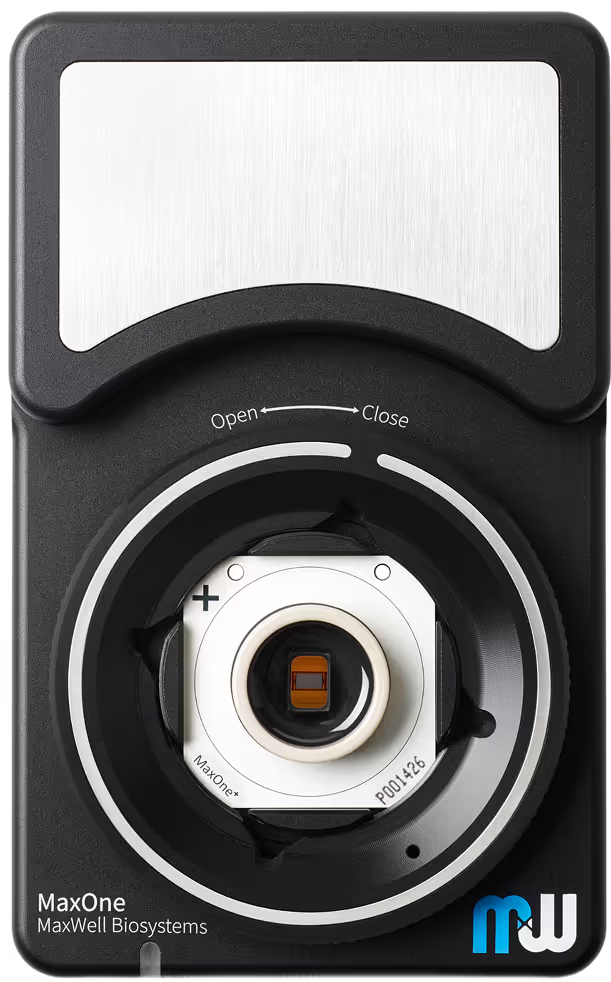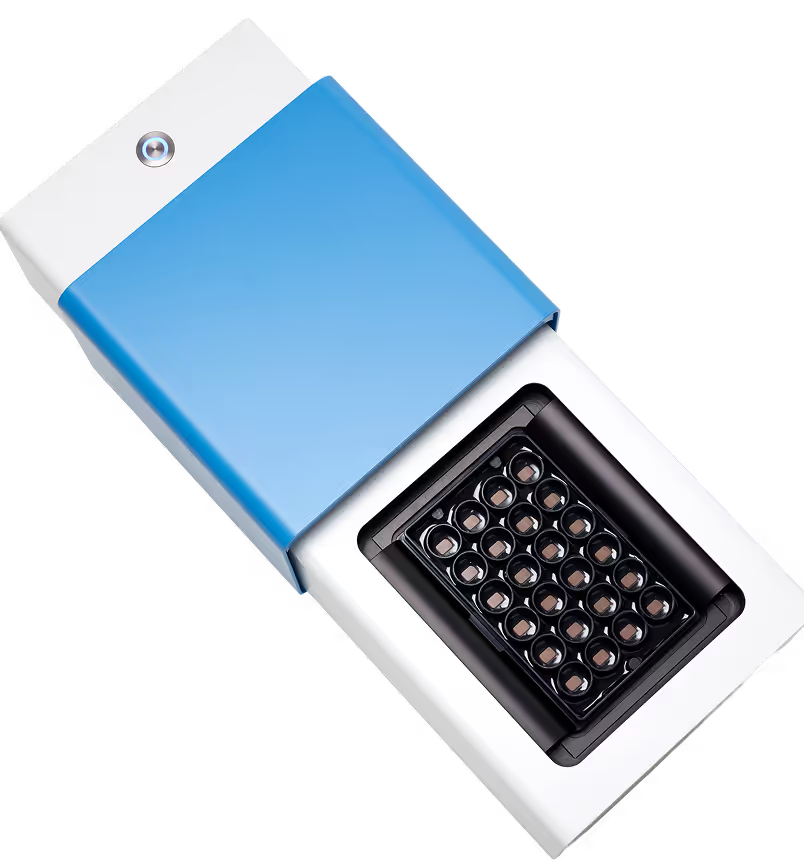
Neurocomputing
Every Cell has a Story to Tell.
Let’s Discover Yours
Neurocomputing uses living neuronal networks to explore principles of biological information processing, learning, and adaptation.
In vitro neurocomputing experiments involve defined recording and stimulation paradigms to perform computational tasks. In these studies, biological neuronal networks can be entrained, perturbed, and monitored to study core mechanisms of plasticity, memory formation, pattern recognition, and signal integration, bridging neuroscience with bioinspired computing and neuromorphic technologies.
MaxWell Biosystems’ High-Density Microelectrode Array (HD-MEA) platforms are ideally suited for neurocomputing applications. With thousands of addressable electrodes and flexible stimulation capabilities, researchers can deliver precise input patterns and record high-resolution responses across entire networks. The HD-MEA’s ultra-high sensitivity enables detection of individual spikes, bursts, and dynamic activity flows, allowing real-time tracking of how networks compute, adapt, and evolve. This makes MaxWell Biosystems’ HD-MEA technology a powerful tool for understanding biological computation and building next-generation biohybrid systems.
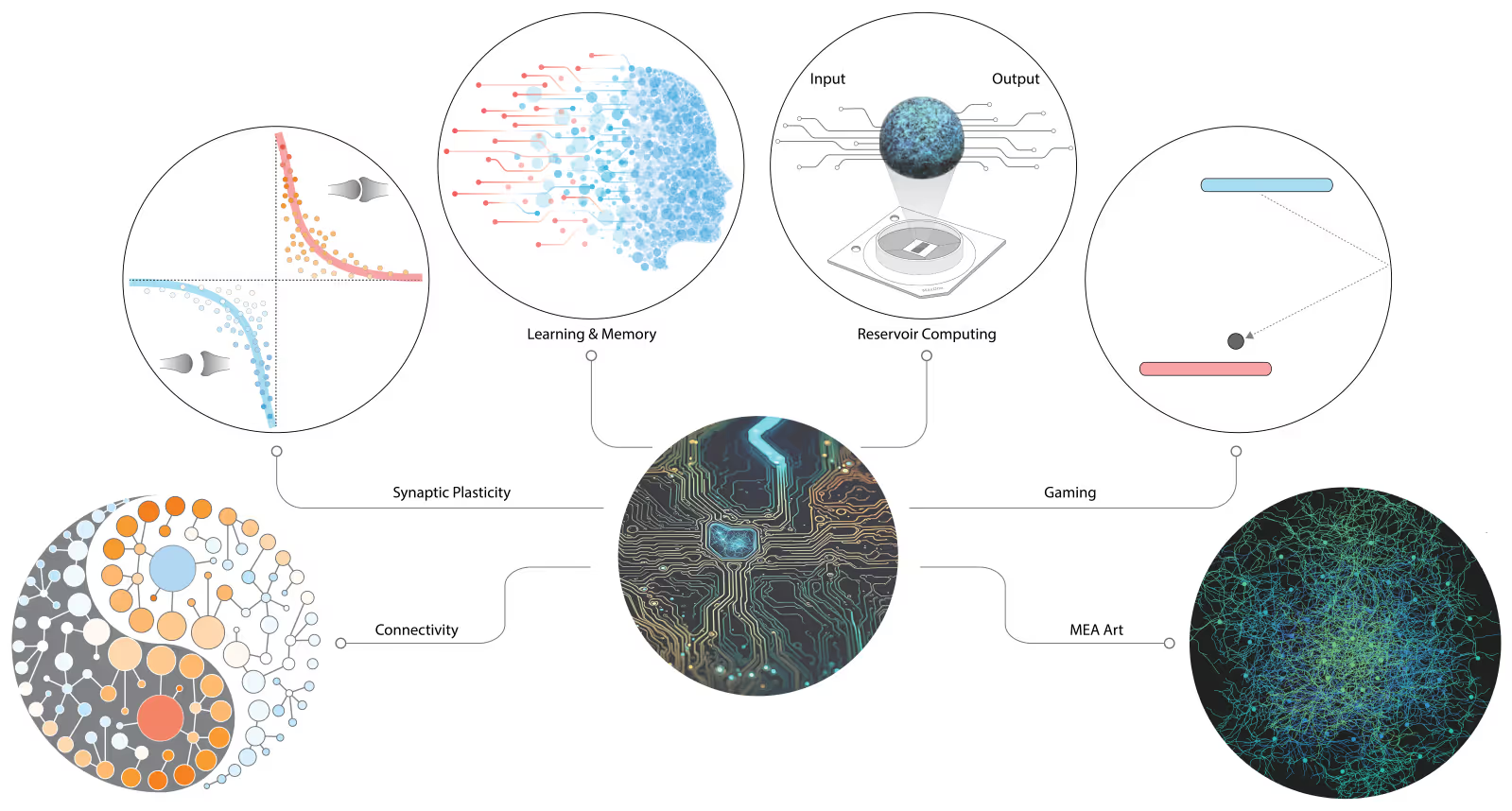
Pioneering the future of computing with neuronal models
At the intersection of biology and technology, researchers are investigating how in vitro brain models, such as neural organoids, can form complex, functional circuits that resemble the human brain. By using the MaxOne HD-MEA Chip to precisely record and stimulate activity within these networks, new frontiers in biohybrid computing are emerging. One example is the concept of a Brain Processing Unit (BPU), a living system capable of learning, adapting, and processing information in ways inspired by the human brain.
Precisely interact with every cell using high-resolution recording and stimulation
To decode how biological circuits compute, it is essential to interact with each cell in the network. MaxWell Biosystems’ dense electrode layout and flexible stimulation deliver precise inputs and enable real-time observation of dynamic activity, supporting experiments that map, entrain, and perturb functional connectivity at cellular resolution.
Achieve real-time, closed-loop experimental control via API
The API empowers researchers to define stimulation paradigms, adapt HD-MEA commands in real time, and build feedback-based control loops. This capability supports cutting-edge neurocomputing use cases, such as real-time training, reinforcement learning, and AI-biology interface experiments.
Reveal learning and adaptation by tracking plasticity across the network
Uncover how networks change over time with ultra-sensitive recordings that detect subtle shifts in activity patterns. HD-MEAs support detailed studies of synaptic plasticity, memory encoding, and network-level learning.
Bridge biohybrid systems through seamless integration
Our HD-MEA systems can be interfaced directly with digital processors and neuromorphic hardware, enabling real-time communication between living neuronal networks and external devices. This provides a flexible foundation for connecting with neuromorphic systems and exploring hybrid models of intelligence.

Case studies
Adaptive reservoir computing with cortical organoids on HD-MEAs
This study demonstrates how cortical organoids plated on HD-MEAs can act as a living reservoir for neurocomputing tasks called Brainoware. Spatiotemporal electrical inputs are delivered to the organoid, generating complex responses recorded at high resolution across thousands of electrodes. By decoding evoked activity using machine learning, the system achieves classification, prediction, and adaptive computation in vitro. This approach leverages precise interaction with every cell in the network, enabling detailed studies of information processing and unsupervised learning in brain-inspired computing frameworks. In one application of the Brainoware framework, it was trained on speech recognition tasks, successfully identifying the correct speaker from different audio clips.Read more on Cai et al., Nature Electronics, 2024.
Brainoware reservoir computing with unsupervised learning
(A) Adaptive reservoir computing framework using Brainoware. (B) Brainoware setup with a brain organoid on the MaxOne HD-MEA chip. (C) Immunostaining of cortical organoids (mature neuron marked with MAP2; astrocyte with GFAP; neurons of early differentiation stage with TuJ1, and neural progenitor cells with SOX2). Scale bar: 100 μm. (D) Hypothesized network reshaping and learning driven by synaptic plasticity and synaptic inhibition.
Data adapted from Cai et al., Nature Electronics, 2024.
Real-time closed-loop biohybrid computing
This study describes how a closed-loop system links cortical organoids (connectoids) on the MaxOne HD-MEA with the hardware spiking network emulated on BioemuS. Neural bursts detected in one system trigger stimulation in the other, with all detection and control steps automated through a custom Python interface. This experiment showcases the MaxLab Live API-based, real-time feedback capabilities enabling real-time, bi-directional communication between living and silicon-based networks for biohybrid neurocomputing. Read more on Beaubois et al., Nature Communications, 2024.
Closed-Loop Interaction Between Connectoids and BioemuS Neural Emulator
Top: Schematic shows MaxOne HD-MEA with connectoids (two connected organoids) and the BioemuS hardware neural network linked by a custom Python control script using the MaxLab Live API Module. Upon burst detection in either system, stimulation is triggered in the other.
Bottom: Raster plot illustrates time-locked burst events (color-coded) and stimulation triggers (triangles) over time, exemplifying the closed-loop architecture.
Data adapted from Beaubois et al., Nature communications, 2024.
Synthetic biological intelligence: self-organized, goal-directed activity in cultures
This study showcases DishBrain, which integrates in vitro neural networks on the MaxOne HD-MEA with a simulated Pong game, creating a hybrid bio-digital system. Through closed-loop stimulation and feedback, the neurons adapt their activity in real time, demonstrating learning and self-organization in response to sensory consequences. Our HD-MEA platform enables precise tracking and modulation of these complex adaptive behaviors in living networks, bridging the gap between biological computation and artificial intelligence. By showing that in vitro neural circuits can adapt within a simulated environment, this work opens avenues for functional assays in toxicology, drug discovery, and high-throughput screening of cognitive performance. Read more on Kagan et al., Neuron, 2022.
Synthetic Biological Intelligence: Learning and Adaptation in DishBrain
Graphical schematic illustrates the connection of neuronal cultures on the MaxOne HD-MEA chip to a simulated Pong environment. Bidirectional communication enables the network to receive sensory input (stimulation), act within the game, and adapt its firing patterns based on outcome feedback, supporting goal-directed behavior and synthetic intelligence.
Data adapted from Kagan et al., Neuron, 2022.
Relevant
Applications
Relevant Biological Models
Resources
BiœmuS: A new tool for neurological disorders studies through real-time emulation and hybridization using biomimetic Spiking Neural Network

Brain organoid reservoir computing for artificial intelligence

In vitro neurons learn and exhibit sentience when embodied in a simulated game-world


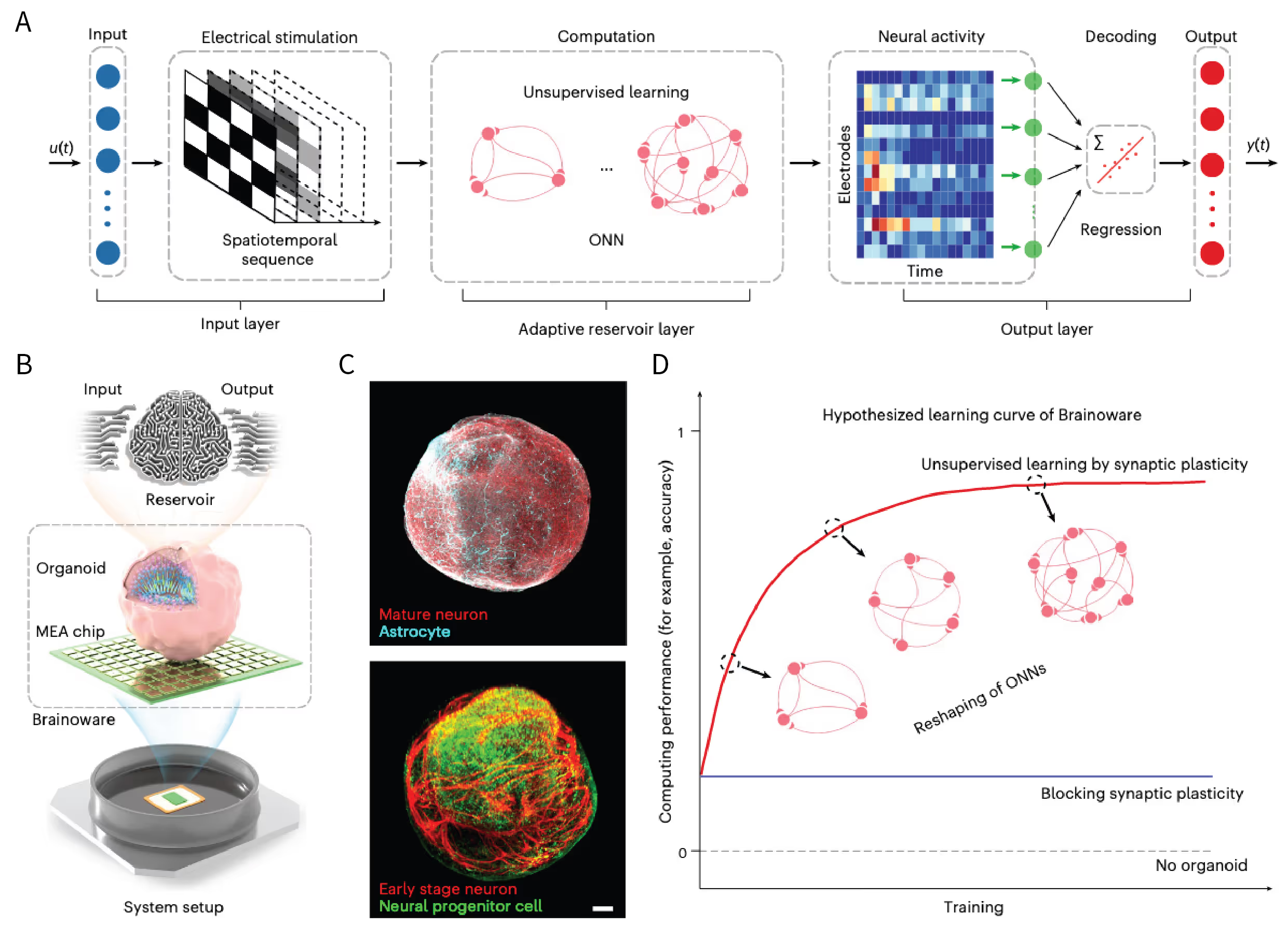


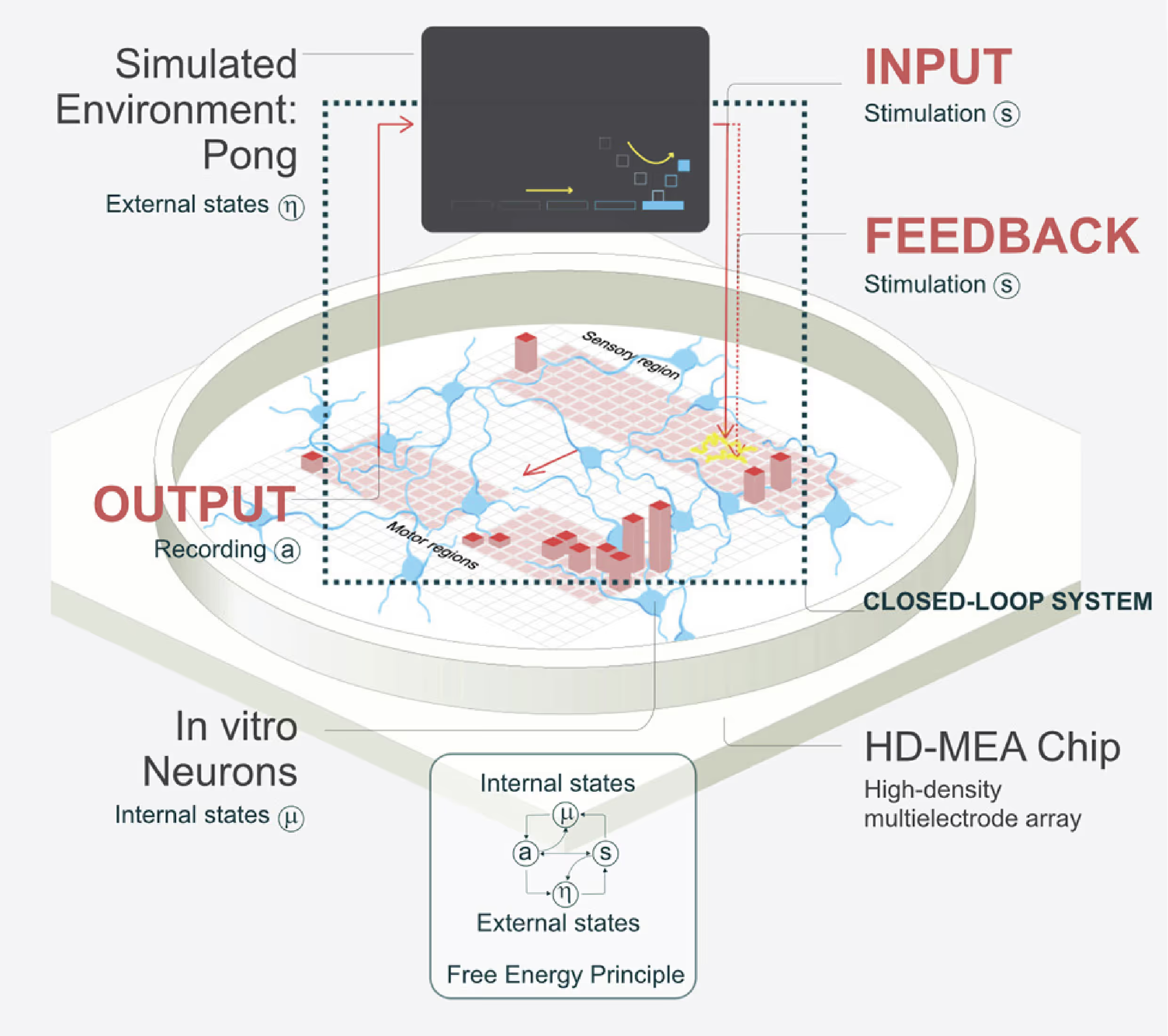

.avif)
